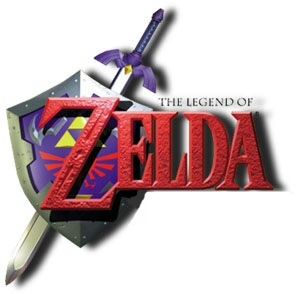The latest in the Zelda series continues to impress.
Zelda fans should already be excited for The Legend of Zelda: A Link Between Worlds, but I am hoping that everybody gives it a shot. Traditionally, the 2D and handheld Zelda games have never really grabbed me in quite the same way as the now-standard 3D titles. After getting some hands-on time with A Link Between Worlds, I got right into it, and didn’t want to give it up. Running at a smooth 60 FPS, the game is both technologically and visually stunning. The dungeons are varied and provide thought-provoking challenges to overcome. While I wasn’t stumped by anything the game threw at me, I still needed to stop to evaluate the situation a few times in order to make progress.
Some missing Links.
Link has jumped from one generation to the next while reinventing his style for saving princess Zelda with every iteration. Unfortunately, the most recent games have been much less groundbreaking than the golden age from the original through Ocarina of Time. Whereas the player had become accustomed to at least a few new mechanics and drastically different artistic styles between each installment, recently players have been fed mostly regurgitated ideas. Even so, the new technological capabilities of Nintendo’s 3DS and Wii U should provide plenty of new places to take the franchise.
Without Sega's competing BLAST PROCESSING, it's just not the same.
If you were paying attention yesterday during Nintendo’s "Nintendo Direct" address, you might’ve noticed a common theme undercutting the entire broadcast. Let’s take a look at some of the biggest properties put on display: Yoshi’s Island 3, Donkey Kong Country Returns 3D, The Legend of Zelda (A Link to the Past 2), Earthbound, and Mario & Luigi: Dream Team, which saw a change in visuals/perspective that makes it even closer in style to its spiritual predecessor, Super Mario RPG . Maybe it’s just me, but this line-up is conjuring up some strong memories of the SNES.
You'd think after the 100th skeleton runs towards his death that they'd change up their strategy...
Painkiller is aggressive. Hordes of demonic forces stream forth from every conceivable point of entry, threatening to overwhelm with sheer numbers. Death metal pumps through the speakers, fueling the adrenaline-soaked battles. I cycle through my selection of wicked-looking weapons, choosing the right tool for the task at hand—blowing big holes into my enemies. I have to move around the battlefield quickly, lest I get pushed into a corner and annihilated. Painkiller is all about turning the dial to 11, and it does so with glee. I was bored by level 2.
Did a franchise started as a Mario rip-off surpass its “inspiration”? No. No, it did not.
Somewhere during the creation of a game, there seems to be a point where the design team must ask itself, “Should we make our game longer?” Sometimes this might result in the addition of compelling new content, but so often it results in revisiting the same places you’ve already been to collect more thingamabobs. This very decision is what ruins Giana Sisters: Twisted Dreams. Your forward progress in what could be a wonderful game is stymied until you can perfect your collection of MacGuffins without dying in levels you’ve already completed. It’s a real shame too, because without this unnecessary padding I wouldn’t have noticed the game’s glitches or gotten as frustrated with its inconsistent responses. Most importantly, I wouldn’t have gotten so sick of playing it.
Kids are, in fact, able to discern a quality title from a middling one.
A while ago, I made the decision, as most parents do, to involve my children in my hobbies. I did this by playing catch with them in the backyard, going to baseball games, playing video games, and most recently, writing a co-op review for PixlBit. If there’s one thing I’ve learned from the experience, it’s that kids will surprise you with just how mature their perspective can be, even if they aren’t able to properly articulate it yet.










